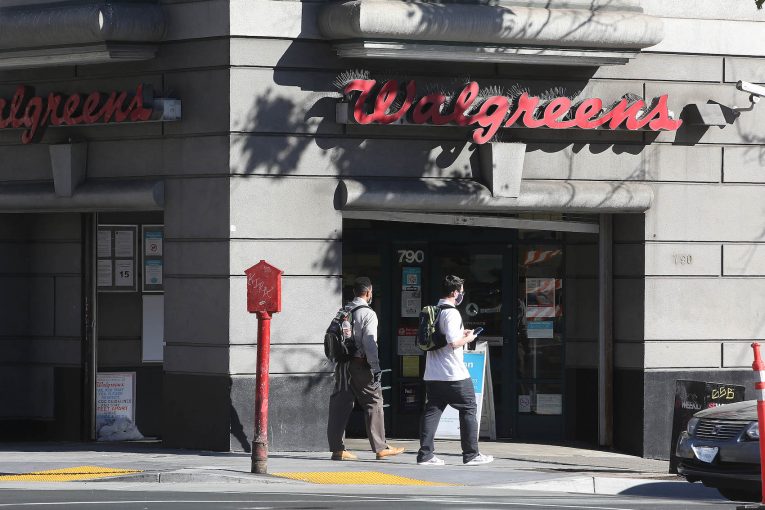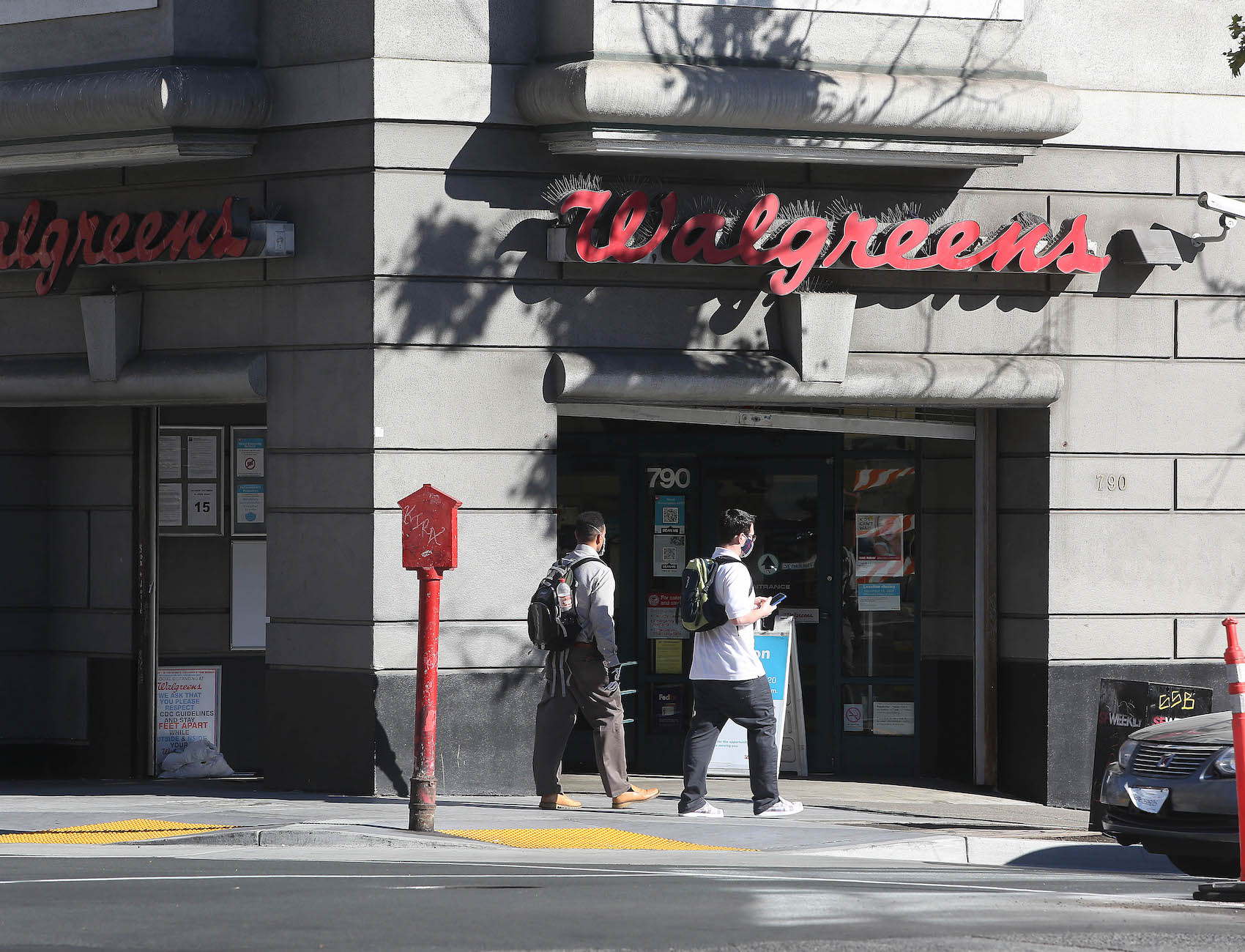

by David M. Greenwald
Executive Editor
For criminal justice reformers, this was not the best week. We saw Governor Newsom propose hundreds of millions for grants to crack down on organized retail theft. Los Angeles Mayor Eric Garcetti criticize zero bail while talking about the need for more cops and then San Francisco Mayor London Breed called out “the bullshit” and then on Friday declaired a state of emergency.
There is frankly a lot panic going on and that is making it difficult to separate the signal from the noise.
Understanding the data is the first step needed to calm the public and politicians down on this. Progressive policies have been blamed for a lot of the problems, but from a data standpoint that doesn’t pass the smell test.
The crime that has gone up, has gone up across the board – in red states as well as blue states, in places with criminal justice reform and places without. In places that there has been bail reform (not many places btw) and places without.
Blaming it on defund the police – which has not happened – doesn’t make a lot of sense either.
In California, we have seen rising crime blamed on Prop 47 and zero bail, but crime has risen just as much in states that didn’t enact those things.
Let’s look at retail theft.
“I strongly believe the claims about massive theft in LA, SF, etc. are significantly oversold,” Fordham Law Professor John Pfaff tweeted this week.

A graph of shoplifting in LA shows that shoplifing in the city continues to fall and has since 2016 when it initially went up after Prop 47.
“Shoplifting and organized retail theft are different crimes: shoplifting is Cal Penal Code § 459.5, organized retail theft Cal Penal Code § 490.4,” Pfaff points out. But until recently there was not much charging of 490.4, though we have seen it lately, as it was in the case that was arraigned in Yolo County early this week.
There is also the difficulty in assessing the extent to which reported crime skews the data.
“Willingness to report can surely be sensitive to things like expected response,” Pfaff acknowledges. It is why perhaps the leading indicators for trends should be murders (which are going to have high rates of reporting) and car thefts, because insurance requires police reports in order for there to be compensation.
Did reporting of theft suddenly go down? It’s possible. We will see what happens now that the state and local jurisdictions have announced crackdowns on such crime.
Nevertheless, some of the claims made by the retailers are in fact preposterous and falsifiable.
The LA Times this week did a great job of showing how the claims of the retailers are just wrong (see: “Retailers say thefts are at crisis level. The numbers say otherwise.”)
“Organized retail crime is haunting the nation this holiday season,” the Times reports. “Although some retail and law enforcement lobbyists cite eye-popping figures, there is reason to doubt the problem is anywhere near as large or widespread as they say.”
“It’s easy to get attention for sensational claims, however, particularly when they come from official sources,” the continue noting claims that businesses in SF and Oakland alone are losing $3.6 billion to organized retail crime a year.
“That would mean retail gangs steal nearly 25% of total sales in San Francisco and Oakland combined,” they continue. “Can that be right? In a word: no.”
A more reasonable estimate is $700,000 per bill or 0.07% of total sales, about 330 times lower than the estimate by the retailers.
The CRA staffer was asked how the organization arrived at this number. And they provided a back of the envelope estimate – “If organized retail thieves steal $70 billion annually, and California accounts for 10% of the U.S., California’s losses add up to $7 billion, meaning the Bay Area “is likely in the billions itself.””
The problem is, “that report didn’t find that organized retail thieves stole $68.9 billion per year at all — it estimated that all retail crime combined, including employee theft, regular shoplifting and fraud, added up to that number.”
That’s just not a good use of data. I’m not one who adheres to the maxim that there are lies, damn lies, and statistics.” Statistics cannot be made to say whatever you want them to. Misused statistics can purport to say things, but they can be proven false.
The Times notes, “An industry advocate made a similar error in front of the Senate Judiciary Committee in early November.”
This time they came up with, “CLEAR (National Coalition of Law Enforcement and Retail) estimates that organized retail crime accounts for $45 billion in annual losses for retailers.” Rich Rossman, Vice President of CLEAR, explained, “that it was pulled from the National Retail Federation’s report.”
But the Times points out, “the NRF puts all losses to theft and fraud from all sources at around $45 billion, not losses to organized retail crime.”
This problem aside, the Times points out that there is a $25 billion “discrepancy between the figures touted by the two industry groups” and that this “suggests the difficulty of quantifying any problem in an industry as splintered as retail. When it comes to organized retail crime specifically, the best estimates appear much smaller.”
Is this an actual problem – I have asked before – and certainly someone can show me videos of crimes happening which I don’t doubt. But the data is supposed to look beyond anecdotes and toward systemic issues – and there, it’s hard to know.
The LA Times finds, “Broader crime statistics paint a picture of a decreasing problem, not one on the rise. National crime statistics from the FBI show shoplifting decreasing steadily every year from 2015 through 2020, the most recent data available.”
They find at a local level, “more up-to-date statistics sharpen the image of a waning problem. Property crime in Los Angeles is up 2.6% from last year, according to LAPD numbers published Nov. 27, but down 6.6% from 2019.”
Meanwhile, “The category that includes shoplifting — “personal/other theft” per LAPD — is down 32% from 2019.”
So what has gone up?
“One thing that has gone up is the visibility of open theft from stores. Ubiquitous security cameras and smartphones mean that few crimes go unrecorded, and videos of people loading up bags and carts with products and walking out the door make for viral content,” the Times points out.
In addition, they point out, “The ease of committing a crime like that is, in some part, traceable to decisions made by the retailers themselves, according to industry analysts.”
The real question is what do we do about it? This may not be a very popular opinion thee days, but the idea that the solution is to lock a whole lot of people stealing property in cages for prolonged periods of time doesn’t make a lot of sense to me. But that seems to be once again the direction we are headed with people like Gavin Newsom, London Breed and Eric Garcetti leading the way.


Organized retail theft causes double loss – loss of product and loss of customers who buy the stolen product online or at pop up physical markets. A third resulting loss is that it frightens customers and drives them away. I don’t think it is as simple as you portray.
There is no crisis. Problem solved.
If you don’t support a legal remedy, what do you suggest?
Two threads today… in one, author bemoans that folk are not taking enough action to solve “the housing crisis” and upbraids those who don’t seem to believe there is a serious crisis… same author, in another thread, ‘discounts’ concern that there is a serious retail theft crisis, and upbraids those who believe there is a crisis.
A “crisis” is a situation where and individual, or a group the individual has affinity for, is adversely affected. If the individual, or a group the individual has affinity for, is NOT adversely affected, no crisis. Very simple.
This is what can be called a professional embarrassment. We have a distinguished law professor on the other side of the country lecturing us on California criminal law. He points out all the relevant California statutes that apply to the criminal act of shoplifting. Thank you, Professor, now maybe you can you show us how to tie our shoes?
From that compilation of data Professor Pfaff deduces that statistically speaking, shoplifting is really not that big a deal. Ergo, this column follows.
In the Fordham Law Professor’s world, we can be sure his premise is true. Seldom, if ever, do shoplifters go into Pfaff’s home, his office, or his classroom and steal his stuff.
But take a moment, Professor and pick up the phone and call somebody not very far from you. Share your views with the manager of the Fordham University Bookstore–shoplifting is trivial. You’ll get a earful, I promise, it isn’t just the theft of a particular retail item, the impact is much greater. The summation will no way be supportive of your take on current retail crime consequences.
A law professor from a prestigious school such as Fordham University is presumed to be an expert on researching the law, particularly statutory law. But there’s a problem, a big problem, that completely compromises the thrust of the theme of the published article and this column.
Read another Penal Code Section, Section 484. Here contains the overwhelming majority of shoplifting arrests, prosecutions, convictions. It’s the misdemeanor section for petty theft. Yes, it’s been a “bad week,” this column did not make it any better.
It would also include damage (e.g., windows, etc.). But the bigger impact is probably on customers’ perceptions of personal safety and resulting impact on sales. Combined with mask-wearing requirements, ease of online shopping, etc.
If data is “separated out” to show that “shoplifting” hasn’t increased, that would not pass the “smell test”.
Happy holidays to the retail industry!
And then there’s this:
https://sanfrancisco.cbslocal.com/2021/11/02/safeway-in-castro-cuts-hours-due-to-off-the-charts-shoplifting-its-sad-upsetting-and-frustrating/
That particular location has a feel of going into a war zone, and was headed that way for some time. From what I recall/hear, you can’t even take a shopping cart from the store into their own parking lot (without requesting to do so, accompanied by store staff). And it’s not like it’s in a bad location, in the city.
Just found this article, regarding the carts:
https://www.nbcbayarea.com/news/local/no-shopping-carts-allowed-outside-san-francisco-safeway-amid-theft-concerns/2586974/#:~:text=Scott%20Budman%20reports.-,Hoping%20to%20stop%20theft%2C%20one%20San%20Francisco%20Safeway%20is%20no,carts%20have%20been%20stolen%20recently.&text=Now%2C%20shoppers%20can%20only%20use%20the%20carts%20inside.
Hey, but at least housing is inexpensive around there, right? 🙂
I come here for the good use of data that’s done here 😐
I am an adherent of that maxim.
True. Statistician, heal thyself — with numbers.
So you claim.
And for that the nation turns to the Davis Vanguard 😐
Amazing the parallels by DG in this here DV article to what AOC is saying in this DM article:
GOP lawmakers and retail groups slam ‘tone deaf and offensive’ AOC for saying wave of organized smash-and-grab robberies isn’t actually true
https://www.dailymail.co.uk/news/article-10277541/GOP-accuses-AOC-tone-deaf-offensive-dismisses-smash-grab-crime-wave.html
Also amazing the parallel between the comments by the RILA and GOP to the comments by those deemed as the so-labeled ‘conservative commenters’ on the DV comments sections.
I’m sure mere reference to the media source and those quoted will negate the argument as those making it are tarred, feathered and brought to Central Park (Davis or New York) to be tried before the binotheistic progressive gods ‘Science’ and ‘Statistics’. Who oddly are both male gods . . . what’s up with that? . . . what’s up with that? OOOOO-Weeeeeee!